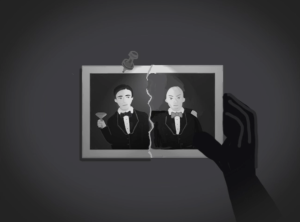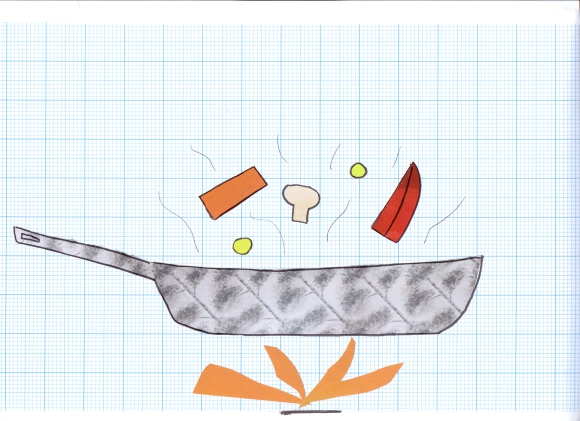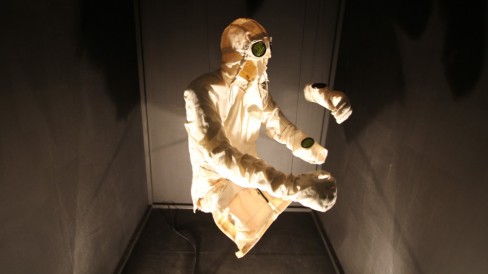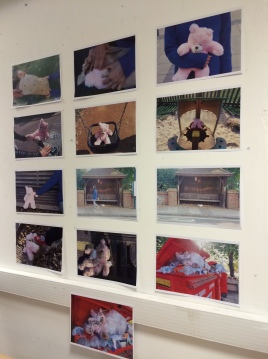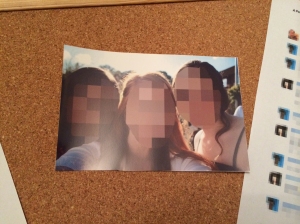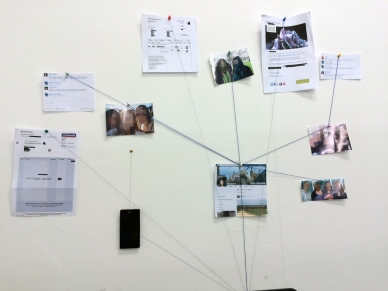This week was the week of Mix – not a pathway but a chance to experiment with drawing as well as a trip to London.
On Monday morning, we began by drawing a variety of objects including shells, bones, bottles and pinecones. Each of the objects presented new challenges – the pattern of the shells, the texture of the pinecone and the shadow on the bone – and therefore we had to use different techniques to represent each object differently. I used a variety of materials including charcoal, pencil, fine liner, felt tip, and taking rubbings of the shells using a graphite pencil. My favourite of the drawings was actually the rubbing of the shell as I felt it showed the texture and pattern really well. I also enjoyed drawing the bone, as it was so different to objects that I had drawn before. I used a combination of pencil – to show the shape and shadow – and fine liner – to define the strong edges.

My drawings from Day One
On our second day, we spent the day walking around the town and drawing buildings on our way. Before we left, we were told about the importance of looking everywhere, and not taking what you see for granted. On my journey, I saw several different things I hadn’t seen before, such as wind dials, differences in building heights, and even a piece of sculpture. It was difficult to draw while walking, and as a result, my drawings aren’t as accurate or as detailed as I would have liked them to be. However, my favourite drawing of the day was one of Farnham Leisure Centre, a building with a modern design with bold angles and defined lines. To represent this in my drawing, I used a combination of fine liner and felt tip to communicate the strong edges of the building.

Farnham Leisure Centre
Other drawings I created included a drawing of Waitrose, of a fountain and a church. In each image I used different techniques to represent each building. I found that charcoal worked particularly well to convey the texture of brickwork.
On our last day of the week, we took a trip to London to see several exhibitions and galleries. Our first stop of the day was the Jerwood Space to see the Jerwood Drawing Prize – “the largest and longest running annual open exhibition for drawing in the UK” http://jerwoodvisualarts.org/jerwood-drawing-prize-2014 The exhibition featured all sorts of different drawings in all styles – some that I wouldn’t have even considered to be drawings before I saw them.
Our next visit was to the Tate Modern to look at a variety of work on display. I was particularly interested in the Poetry & Dream exhibition which predominantly featured work of the Surrealists. My favourite piece on display here was a piece called ‘Tiny Deaths’ by Bill Viola – a darkened room where three ghost-like figures appear. http://www.tate.org.uk/whats-on/tate-modern/display/bill-viola
Our final visit was to Somerset House where we saw the National Open Art exhibition: http://www.somersethouse.org.uk/visual-arts/national-open-art There was some really interesting work on display, of all different types, and it was really inspiring to look at. Also at Somerset House, we saw the AOI Illustration Awards, which was my favourite exhibition of the day: http://www.somersethouse.org.uk/visual-arts/aoi-illustration-awards-2014 There was so much interesting work to look at, in all different applications such as book covers, ad campaigns, little animations and more. My favourite work of the day was some illustrations by an illustrator called Andy Ward, who created some posters for a mental illness awareness campaign: http://ucsccares.ucsc.edu His images show animals in brightly coloured landscapes suffering with their problems. I think the design is so clever because you don’t realise until you look closely that the animals are suffering, similar to mental illness in real life.
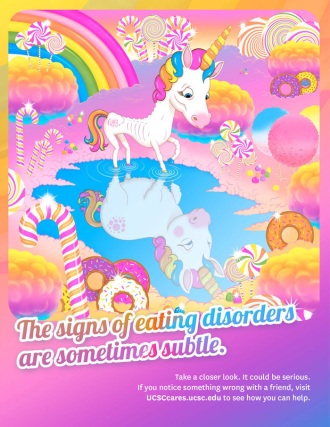
AOI Illustration Award Winner, Andy Ward



